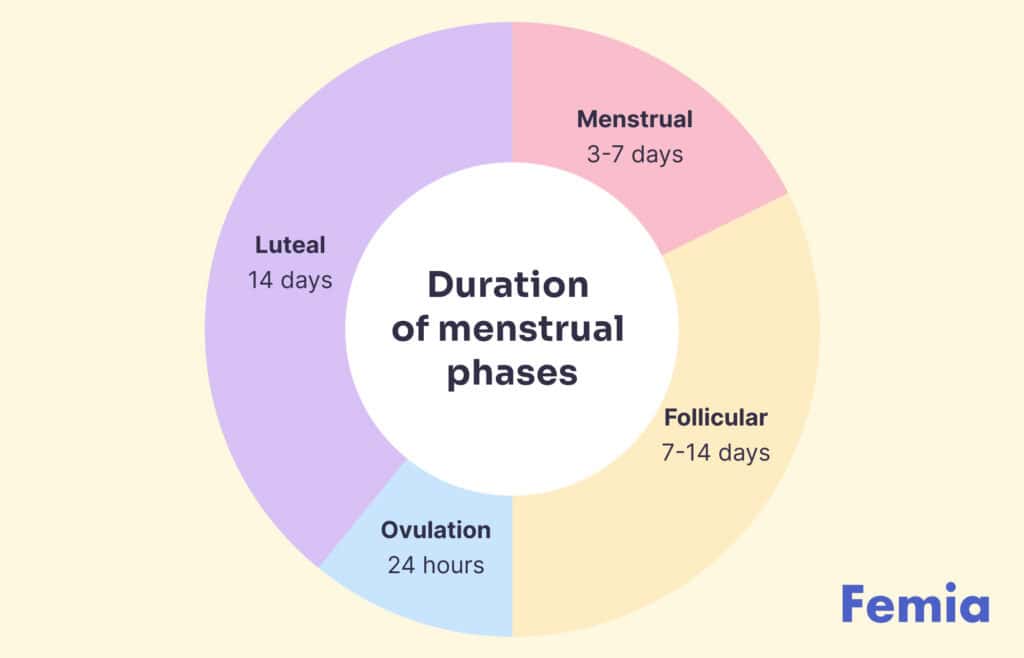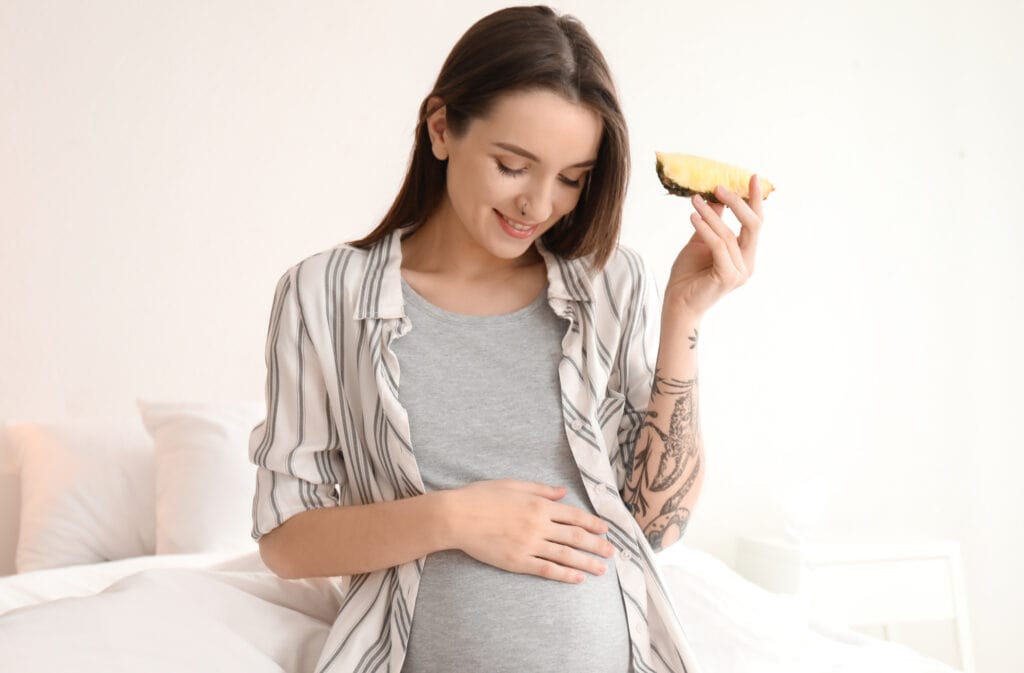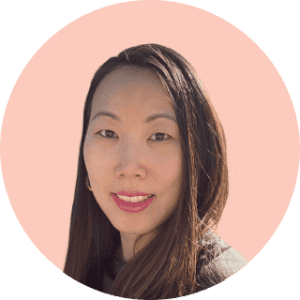Femia > Health Library > Getting Pregnant > Trying to conceive > Implantation bleeding vs period: How to tell the difference
Implantation bleeding vs period: How to tell the difference

- Updated Feb 10, 2025
- Published
CRAFTED BY HUMAN
Crafted by human At Femia, we provide accurate and up-to-date information at every stage of your journey, from trying to conceive, pregnancy and postnatal support. All content is created by a real person based on in-depth research and own professional experience. Femia ensures that you will receive expert advice, strict accuracy and a personalized approach from our authors/medical experts. Learn more about our editorial policy.
FACT CHECKED
Fact checked At Femia Health, we maintain the highest standards of editorial excellence in delivering content focused on helping you conceive, guiding you through pregnancy, and supporting you postpartum. Explore our content review principles to learn how we ensure the accuracy and quality of our health and lifestyle tips for every stage of your journey.
- Implantation bleeding is light spotting that occurs when a fertilized egg attaches to the uterus, typically 1-2 weeks after conception and before a missed period.
- Key differences from a period: implantation bleeding is lighter, shorter (hours to 2 days), and pink to brown in color, while periods are heavier, longer (2-7 days), and bright to dark red.
- If unsure, wait 3 days after spotting stops before taking a pregnancy test; consult a healthcare provider for any unusual bleeding or concerns.
Wondering whether you’re experiencing implantation bleeding or just the start of your period? You’re not alone—many women find it tricky to tell the difference. Both can involve light vaginal bleeding, but they happen for very different reasons.
In this article, we’ll guide you through the key differences between implantation bleeding and a period. This way, you can feel confident identifying one of the earliest signs of pregnancy and start your pregnancy care journey as soon as possible.
What is implantation bleeding?
Implantation bleeding is very light bleeding or “spotting” that can happen when a fertilized egg attaches itself to the uterus wall.
During ovulation, your ovaries release an egg, and if you have sex around this time, it can be fertilized by a sperm cell. Once fertilized, the egg travels through your fallopian tube and into your uterus. At this stage, the fertilized egg, now called a blastocyst, attaches itself to the uterine wall and starts forming the placenta. This is called “implantation” and marks the beginning of a pregnancy. Sometimes, as the egg attaches to the uterus, it causes some of the blood vessels in the lining to break, resulting in a small amount of bleeding.
According to the American College of Obstetricians and Gynaecologists (ACOG), implantation bleeding usually occurs one to two weeks after fertilization, meaning it usually falls about a week before your period is due. However, it can occur a bit earlier or later in your cycle depending on when you ovulated.
Not every woman will experience implantation bleeding, so not experiencing any spotting around this time doesn’t mean you’re not pregnant.
👉Find out more: How long after implantation bleeding can I test for pregnancy?
Understanding your menstrual period

To tell the difference between implantation bleeding vs your period, it’s helpful to first understand your menstrual cycle.
A typical menstrual cycle lasts 28 days, but anywhere from 21–35 days is considered normal. A new cycle begins on the first day of your menstrual period.
Your menstrual period is like hitting a reset button. It is your body’s way of telling you that you aren’t pregnant. During your period, you get rid of the old uterine lining that has built up over the previous cycle, so that your body can get ready to potentially get pregnant in the next.
Let’s break down the menstrual cycle into a timeline so you can see what’s happening in your body at each stage. Remember, this is just a general guide based on the average cycle, so your experience might be a little different. If you have any concerns or questions, it’s a good idea to have a chat with your healthcare provider for personalized advice.
Phase 1: The follicular phase (days 1–14).
- Days 1–5: Your period starts. Day 1 of your cycle is the first day of your period. Most periods last between 2–7 days, with the heaviest bleeding in the first two days.
- Days 6–14: Changing hormone levels cause the lining of your uterus to start thickening and follicles to grow on the ovaries. One follicle will mature into an egg.
- Ovulation (day 14). Around day 14, a mature egg is released from one of your ovaries—a process called “ovulation.” Now is the time when you’re most fertile and getting pregnant is possible. The egg starts traveling down the fallopian tube towards the uterus, ready to meet a sperm.
👉Find out more: Discharge after ovulation: Could it be a sign of pregnancy?
Phase 2: Luteal phase (days 15–28). After ovulation, your body starts preparing for the possibility of pregnancy. The uterine lining thickens and is ready for implantation. If the egg isn’t fertilized, hormone levels drop and signal the body to start the next period. The cycle then finishes, and your period will begin again around day 28.
Implantation bleeding vs. period bleeding: Key differences
Implantation bleeding can be one of the first signs of pregnancy, even before a pregnancy test can detect it. Since it can occur around the same time as your period, however, it’s easy to confuse the two. To help you figure out whether you’re experiencing implantation bleeding or the start of your period, here is a list of the key differences to look for.
| Implantation Bleeding | Period bleeding | |
|---|---|---|
| Timing | • Occurs one to two weeks after conception.
• Usually before you expect your period. | • Follows your typical cycle length, occurs (on average) every 28–35 days. |
| Flow | • Light spotting, usually found after wiping or in a small amount on a panty liner. | • A heavier flow that fills pads or tampons. |
| Duration | • Lasts a few hours to a couple of days. | • Typically lasts 2–7 days. |
| Color and consistency | • Light pink to dark brown. More like discharge than period blood.
• No clots. | • Ranges from bright to dark red depending on the day.
• May have some small clots. |
You know your period best. If what you experience is different from your normal monthly flow—such as being shorter than normal, more like a light pink to dark brown discharge then blood, doesn’t fill up pads or tampons, or you have less cramping—then it’s possible that you are having implantation bleeding.
Implantation vs. Period: Are there any other symptoms?
| Symptoms | Implantation | Period |
|---|---|---|
| Cramping | • Mild cramping or twinges
• Short lived • Usually starts a few days before typical menstrual cramps would | • Range from mild to severe
• Longer lasting • Starts around the time your period is due |
| Bleeding | • Light spotting
• Light pink to dark brown in color • No clots • Doesn’t fill pads or tampons | • Heavier bleeding
• Bright to dark red in color • May contain small clots • Fills pads or tampons |
| Other possible symptoms | • Mild nausea, headaches, breast tenderness, mood swings, and lower backache can also occur.
• These are similar to symptoms to what you can get before your period, so experiencing them does not guarantee it’s implantation. | • PMS symptoms |
If you are still not sure if you’re experiencing implantation bleeding or the start of your period, the American Pregnancy Association recommends waiting three days until after the spotting stops before taking a pregnancy test.
Other bleeding during early pregnancy
Bleeding during early pregnancy is common; in fact, around 20-40% of pregnant women will experience some bleeding in the first trimester.
Experiencing bleeding during pregnancy can be one of the scariest times for a pregnant woman, and while not all bleeding means that there is something wrong, it can be a dangerous sign.
If you have any bleeding after a positive pregnancy test or when you think you might be pregnant, it’s important to reach out to your healthcare provider. They can arrange any tests or treatment you might need and offer you personalized support.
👉Find out more: PMS vs pregnancy symptoms: How to tell the difference?
Common causes of bleeding in early pregnancy
- Implantation bleeding. Occurs before a pregnancy test is even positive. It is very light spotting that can last anywhere from a few hours to a couple of days. It can sometimes be mistaken for a light period.
- Cervical bleeding. This is any bleeding that comes from the cervix. During pregnancy, there is increased blood flow to the cervix. This can mean it bleeds more easily, especially after sex or if you have a gynae exam.
- Infection or trauma. Any trauma to the vagina or infection can cause bleeding. If you have an infection, then you might need to take medication to help your body clear it.
- Early pregnancy loss. According to the Mayo Clinic, about 10–20% of known pregnancies sadly end in miscarriage. If you have any concerns about a miscarriage, then speak to your healthcare provider. They will be able to determine what is happening and offer guidance and support during this difficult time.
- Ectopic pregnancy. This is when the fertilized egg implants somewhere outside of the uterus. It is a serious and life threatening emergency and needs to be seen by a healthcare provider urgently. The main symptom is vaginal bleeding, but you can also have mild to severe abdominal (tummy) pain. Symptoms of blood loss such as dizziness, fainting, and weakness can also occur. Any woman who has vaginal bleeding during early pregnancy should be examined to rule out an ectopic pregnancy.
@femia.fertility Some people mistake implantation spotting for menstruation, which is completely normal. Implantation occurs on day 6-12 after conception, around the time your period is due. However, implantation bleeding is light and ends quickly. It's best to wait 5-7 days and then take a pregnancy test! #spotting #implantation #implantationspotting #meknowingwhatitmeans #earlypregnancy #ttccommunity #pregnancy #ftm #firsttimeparent #firstpregnancy #pregnancysymptoms #fyp #fypusa ♬ original sound - Femia fertility app
When to take a pregnancy test
If there is a chance that you might be pregnant, the two-week wait from ovulation to your next period can feel like forever. But, holding off to test until the first day after you’ve missed a period will give you the most accurate result.
At-home pregnancy tests work by detecting the hormone human chorionic gonadotropin (hCG) in your pee. Your body starts producing hCG around six days after fertilization, but it takes a few more days for the levels to rise enough to be detected. That’s why it’s best to wait until you‘ve missed your period before testing.
If you think you’ve experienced implantation bleeding, it might be tempting to test right away. But, implantation bleeding occurs before your body has built up enough hCG for most home pregnancy tests to detect, so testing too soon could lead to a false negative.
Some pregnancy tests are very sensitive and can detect low levels of hCG (human chorionic gonadotropin), the pregnancy hormone. This means you might get a positive result even before you’ve missed your period.
However, testing this early can be tricky:
- A positive result at this stage usually does mean you’re pregnant.
- A negative result doesn’t necessarily mean you’re not pregnant. It could simply be that:
- Your hCG levels are still too low for the test to detect.
- You’ve taken the test too early in your cycle.
It’s important to understand that this isn’t a “false negative” – the test is working as it should. It just might be too soon to detect the pregnancy.
For the most accurate results, it’s generally best to wait until after you’ve missed your period to take a pregnancy test. If you get a negative result but still suspect you might be pregnant, wait a few days and test again.
When to contact a doctor?
Implantation bleeding is usually nothing to worry about and shouldn’t cause any problems for you or your potential pregnancy. However, since it can be tricky to know for sure if the bleeding is due to implantation or something else, it’s a good idea to talk to your healthcare provider about any unusual vaginal bleeding.
If your bleeding starts more than a couple of days after your missed period or is heavier than light spotting, it is probably not implantation bleeding and should be checked out by a healthcare professional.
Questions from Femia community
Can implantation bleeding happen to me more than once?
Yes, some women may experience multiple episodes of light spotting during implantation. Each episode should last for no more than a few hours to a couple of days and typically looks like a light pink to dark brown discharge.
Does implantation bleeding affect the accuracy of my pregnancy test?
No, implantation bleeding itself does not affect the accuracy of a pregnancy test. But, taking the test right after you have experienced implantation bleeding will probably be too early and might be negative and incorrectly lead you to think that you are not pregnant. To get the most accurate result, it's best to wait to test until the first day of your missed period or a few days after.
Can I have both implantation bleeding and my period at the same time?
It’s unlikely that you will have both implantation bleeding and your period at the same time. Implantation bleeding typically happens in the week before your period is due. But, some women can have implantation bleeding around the time they expect their period, and it’s possible to mistake this bleeding for a period, especially if you normally have very light periods.
Is it possible to have implantation bleeding without any other pregnancy symptoms?
Yes, implantation bleeding can be the first sign of pregnancy for some women. It may be accompanied by other symptoms like breast tenderness, mild nausea, or headaches. Remember, though: many women who are pregnant don’t experience any symptoms at all this early, so not having implantation bleeding doesn’t mean you’re not pregnant.
The bottom line
Implantation bleeding vs. menstrual periods can be tricky to tell apart. But, understanding the key differences can help you to figure out what your body is telling you.
- Implantation bleeding is usually light spotting, more like a discharge than a full period. It is light pink to dark brown in color, while a period is typically bright to dark red.
- Implantation bleeding usually happens a few days before you expect your period to arrive.
- Implantation bleeding can last from a few hours to a couple of days. If your bleeding goes on for longer than three days, it’s probably not implantation.
Tracking your menstrual cycle is a great way to get to know your body better and can help you spot anything unusual. You can use an app, like Femia, or keep a journal of your periods and menstrual symptoms.
If you experience any unusual bleeding during your cycle, it’s a good idea to reach out to a healthcare provider you trust. They can help you understand what’s happening and provide any support you might need.
References
- “Abnormal Uterine Bleeding.” ACOG, www.acog.org/womens-health/faqs/abnormal-uterine-bleeding#maincontent.
- American Pregnancy Association. “What Is Implantation Bleeding?” American Pregnancy Association, 20 Sept. 2023, www.americanpregnancy.org/pregnancy-symptoms/what-is-implantation-bleeding.
- “Bleeding During Pregnancy.” ACOG, www.acog.org/womens-health/faqs/bleeding-during-pregnancy?utm_source=redirect&utm_medium=web&utm_campaign=otn.
- “Ectopic Pregnancy.” ACOG, www.acog.org/womens-health/faqs/ectopic-pregnancy.
- “Miscarriage – Symptoms and Causes – Mayo Clinic.” Mayo Clinic, 8 Sept. 2023, www.mayoclinic.org/diseases-conditions/pregnancy-loss-miscarriage/symptoms-causes/syc-20354298#:~:text=Overview,actual%20number%20is%20likely%20higher.
- Norwitz, Errol R., and Joong Shin Park. “Overview of the Etiology and Evaluation of Vaginal Bleeding in Pregnant Women.” UpToDate, by Charles J Lockwood, edited by Vanessa A Barss, 2018, www.enjoypregnancyclub.com/wp-content/uploads/2018/05/Overview%20of%20the%20etiology%20and%20evaluation%20of%20vaginal%20bleeding%20in%20pregnant%20women.pdf#page435.
- Thiyagarajan, Dhanalakshmi K., et al. “Physiology, Menstrual Cycle.” StatPearls – NCBI Bookshelf, 24 Oct. 2022, www.ncbi.nlm.nih.gov/books/NBK500020.
- Website, Nhs. “Doing a Pregnancy Test.” nhs.uk, 11 Mar. 2024, www.nhs.uk/pregnancy/trying-for-a-baby/doing-a-pregnancy-test.
- “Periods.” nhs.uk, 29 Aug. 2024, www.nhs.uk/conditions/periods.
- “PMS (Premenstrual Syndrome).” nhs.uk, 27 June 2024, www.nhs.uk/conditions/pre-menstrual-syndrome.

Curious if pregnant women can eat shrimp? Find out if shrimp is safe, how to cook it properly, and what nutrients it offers during pregnancy.

Causes and symptoms of anovulation, a condition where you not ovulating but still have regular menstrual cycles. Discover options to address this common reproductive issue.

Curious if you can eat pineapple during pregnancy? Learn if it’s safe, the myths about labor induction, and how pineapple benefits you while pregnant.

